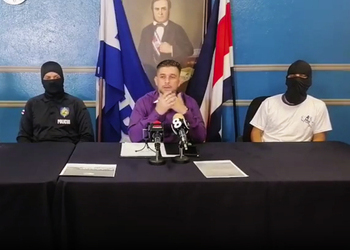Homicides in Costa Rica have reached record highs as the government struggles to coordinate numerous agencies to address mounting security threats.
Costa Rica has already exceeded the record number of homicides recorded last year, according to government statistics. The country has recorded 630 as of September 25, two more than its 2022 record total of 628. InSight Crime’s count excludes cases of euthanasia and professional negligence, which are included in the official homicide toll.
Randall Zúñiga, general director of Costa Rica’s Judicial Investigation Agency (Organismo de Investigación Judicial – OIJ) said in a September 12 press conference that the country’s homicide total could eclipse 900 by the end of 2023.
SEE ALSO: InSight Crime’s 2022 Homicide Round-Up
“This means an increase of between 35 to 40% in homicides in a 365-day period,” he added.
If Zúñiga’s estimate holds, Costa Rica’s homicide rate would surpass 17 per 100,000, dwarfing last year’s murder rate of 12.2 per 100,000, and putting the country among the most violent in the region.
Drug trafficking and organized crime have driven the record homicide rate as criminal groups fight over territories for drug selling and transportation.
Costa Rica has historically been a stepping stone for Colombian cocaine en route to both the United States and Europe. Seizures spiked 56% in 2020 and stayed high in 2021, possibly signaling an increased role in the trade. But in 2022, seizures dropped 46%.
Amid the high seizures of recent years, drug traffickers have increasingly shifted operations away from the country’s cocaine hotspot, the port of Moín in Limón province. Traffickers now target other ports in the country while avoiding authorities in Moín, a factor that perhaps contributed to the drop in 2022.
The Costa Rican government has taken a variety of measures to stem the recent increase in drug trafficking and homicides.
President Rodrigo Chaves announced millions of dollars in assistance from the United States to combat drug trafficking in February. A few months later, in May, Costa Rica’s legislature increased pretrial detention periods as a part of a series of anti-organized crime reforms. And in July, the government launched Operation Sovereignty (Operación Soberanía) in Moín, with authorities promising to scan every container transiting through the port in search of drugs.
InSight Crime Analysis
A lack of coordination between Costa Rican authorities has hampered new security measures against drug trafficking and violence.
Costa Rica has 12 administrative police forces, plus the OIJ, but these units don’t always work together efficiently, said Laura Chinchilla, the former president of Costa Rica who now heads a political risk consulting firm that works in the country.
“These specialized units are professional, but still are struggling to coordinate,” Chinchilla told InSight Crime.
Coordination issues are in part due to the lack of a long-term, coherent national security strategy. Chaves admitted in March that his government had failed to create such a plan during its first year in office, but the president also cast blame on his predecessors, arguing that the country has not had a security plan in more than 10 years.
The lack of formalized security plans in recent years means each new presidential administration has to start from scratch, said Costa Rica’s former Public Security Minister Gustavo Mata.
“Any leader who arrives and does not know the subject has to go through a learning curve. While they are learning the subject, four years have passed and they really did nothing,” Mata told InSight Crime.
“If a national policy is established, the path and goals are already set.”
SEE ALSO: Cocaine and Marijuana Fuel Ever-Higher Homicides in Costa Rica
Law enforcement officials highlighted one example of these coordination struggles on September 14. In a scene uncharacteristic of Costa Rica, a group of security forces, wearing balaclavas to remain anonymous, criticized a decision by the security ministry to reassign the Drug Control Police (Policía de Control de Drogas – PCD) from ports and airports to other parts of the country.
They claimed that seizing cocaine and other drugs is difficult without the PCD’s expertise, due to a lack of training and resources among police at ports of entry. Public Security Minister Mario Zamora rejected the criticism on September 19, calling the statements “reckless” and citing a need for the government to shift investigative resources to combating deadly street gangs responsible for the country’s homicides.
Costa Rica is among several Latin American and Caribbean countries seeing a surge in violence due to increased drug trafficking. In Ecuador, homicides have spiked even more drastically as gangs vie for control of increasing quantities of cocaine flowing into the country from Colombia.
Chinchilla fears Costa Rica could be headed in the same direction.
Costa Rica and Ecuador “are countries that were very calm, that had low levels of violence, but did not act in time. When they realize it, it is already too late,” she told InSight Crime.

